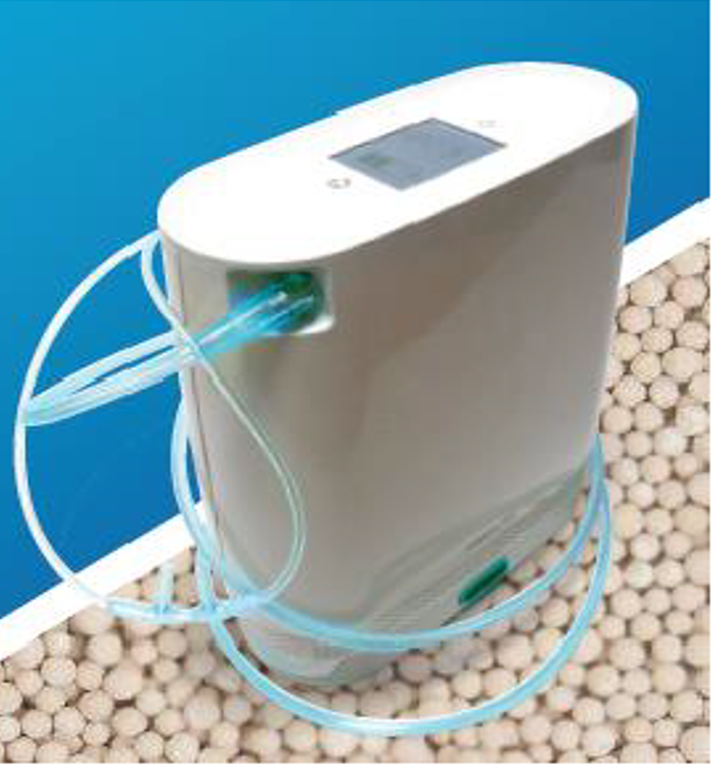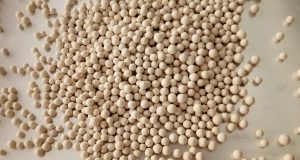An oxygen concentrator is a device that concentrates the oxygen from a gas supply, usually ambient air, by selectively removing nitrogen to supply an oxygen-enriched product gas stream. They arrived as a solution to replace the heavy high pressure oxygen cylinders or small cryogenic liquid oxygen systems, allowing patients using medical oxygen therapy to be treated in their home facilities.
An oxygen concentrator is composed by an air compressor, two cylinders filled with zeolite pellets or beads, a pressure equalizing reservoir, and some valves and tubes. Commercial units are capable to supply up to 10 liters per minute of 90+% oxygen.


Oxygen concentrators operate using pressure swing adsorption (PSA) technology, in which air is taken in, nitrogen is removed and oxygen enriched gas is released for use by people requiring medical oxygen due to low levels in their blood. So far, zeolites have not been mentioned. However, they are the heart of an oxygen concentrator. An oxygen concentrator uses molecular sieves composed by zeolites to adsorb the atmospheric nitrogen and then venting the nitrogen. This type of adsorption system is therefore functionally a nitrogen scrubber leaving the other atmospheric gases to pass through. This leaves oxygen as the primary gas remaining. At high pressure, the porous zeolite adsorbs large quantities of nitrogen, due to its large surface area and chemical character. After, the oxygen and other free components are collected the pressure drops which allows nitrogen to desorb. In an easy way zeolites act as a filter for nitrogen molecules.
Zeolites are widely used for PSA systems thanks to their ability to discriminate between different gases and their large specific surface area. Also, their porosity plays a key role on the adsorption process. The regular array of apertures and cavities (microporosity) resulting from the assembly of SiO4 and AlO4 tetrahedral structures enables some molecules to be selectively taken up in the microporosity, while others are rejected, due to steric effects or affinity differences, as in the case of the oxygen concentrator in which nitrogen is adsorbed on zeolite while oxygen pass through.
Next time you’ll see someone boarding the same flight than you with a nasal cannula providing oxygen, remember, zeolites are making all the job! And do not worry, medical oxygen concentrator have been approved by the FAA for use on airplanes since 2009.
Heidy Ramirez, Arkema




